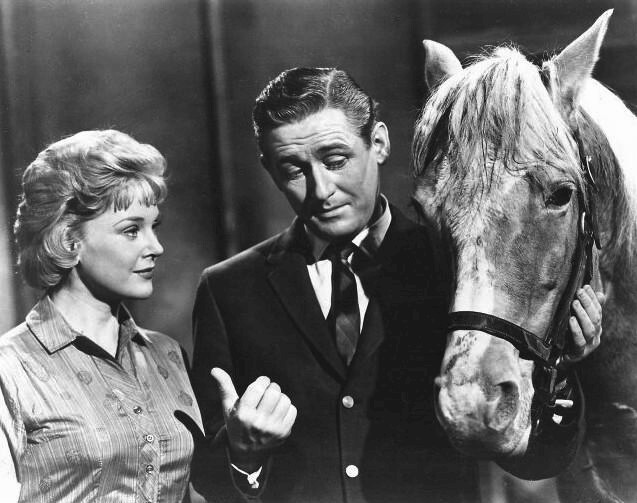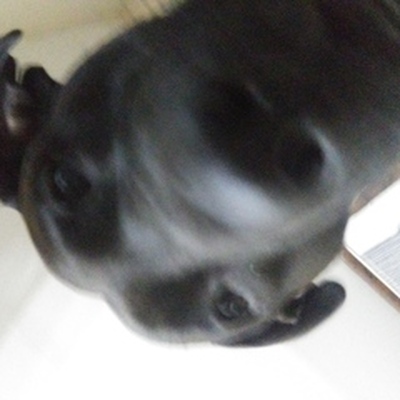
Imagine a horse that chats like your quirky neighbor, cracking jokes from a cozy stable. In the 1960s, Mr. Ed burst o...
Related Blogs
Mr Ed classic tv
11 minutes, 29 seconds
-24 Views 0 Comments 0 Likes 0 Reviews

Mr. Ed: The Iconic Talking Horse That Captivated America
Imagine a horse that chats like your quirky neighbor, cracking jokes from a cozy stable. In the 1960s, Mr. Ed burst onto TV screens and stole hearts across the nation. This clever sitcom mixed everyday laughs with a dash of magic, turning a simple premise into a family favorite.
The show starred a wisecracking horse named Mr. Ed and his owner, Wilbur Post, a guy who often wished his pet would stay quiet. It ran on CBS and became a hit for its fresh take on comedy. We'll dive into Mr. Ed's origins, peek behind the production curtain, explore its wild run on air, and see why it still charms fans today. If you're hunting for Mr. Ed trivia or a trip down TV history lane, stick around.
The Origins of Mr. Ed
Mr. Ed started as a fun idea in the late 1950s. It grew from a love for animals and clever stories. Fans searching for Mr. Ed origins often uncover how this talking horse TV show history ties to earlier hits.
From Concept to Screenplay
Arthur Lubin dreamed up the show after working with horses in films. He drew inspiration from the Francis the Talking Mule movies, which featured a chatty animal in army tales. Lubin scripted the pilot episode, "The Star," where Wilbur buys a horse that surprises him by speaking.
The screenplay blended humor with light fantasy. Writers focused on Wilbur's confusion as the star of the story. This setup hooked viewers right away, setting the tone for the whole series.
Casting the Star: Bamboo Harvester
Bamboo Harvester, a golden palomino American Saddlebred, played Mr. Ed. Born in 1948, this horse had a calm nature perfect for the role. Trainer Ralph Helfer spotted his talent and prepped him for fame.
Helfer used gentle methods to teach Bamboo basic cues. The horse learned to move his lips on command, making the talking scenes look real. Bamboo's charm shone through, winning over crews and audiences alike.
Bringing Wilbur Post to Life
Alan Young stepped into Wilbur's shoes as the kind but clumsy architect. Born in Canada in 1919, Young brought warmth from his radio days and Disney gigs. You might know his voice as Scrooge McDuck in cartoons, but here he nailed the straight man to a talking horse.
Young's timing made Wilbur's mishaps hilarious. He often reacted with wide eyes to Ed's quips. His performance grounded the show's silly side in real emotion.
Behind the Scenes: Production Magic
Creating Mr. Ed took smarts and patience in the 1960s TV world. Teams mixed old-school tricks with fresh ideas to bring the horse to life. Searches for how Mr. Ed talked reveal the clever Mr. Ed production techniques that kept it authentic.
The Innovative Talking Mechanism
Trainers hid a thin thread and pulley setup under Bamboo's halter. They tugged it gently to make his lower lip flap, syncing with voice actors. No fancy electronics—just simple tools for that lifelike mouth movement.
This method let the horse stand still during lines. It fooled viewers into believing Ed really spoke. Crews practiced for hours to match the pulls with Alan Young's reactions.
Filming Locations and Set Design
Most scenes shot on a soundstage in Hollywood, mimicking a neat suburban home. Exteriors came from quiet spots in the San Fernando Valley. Designers built a stable that felt cozy, with doors Ed could "open" for laughs.
Gags like Ed dialing a phone used wires and stands out of sight. The set blended real grass patches with painted backdrops. It all created a world where a talking horse fit right in.
Challenges with Animal Actors
Working with Bamboo meant short days to avoid tiring him out. He could only handle a few hours of filming before needing rest. Multiple takes helped capture his best moods, but weather or moods sometimes delayed shoots.
Trainers watched for signs of stress and kept treats handy. Backup horses filled in if needed, though Bamboo starred in most episodes. These hurdles built a tight-knit team that solved problems on the fly.
The Show's Run and Cultural Phenomenon
Mr. Ed aired from 1961 to 1966, filling CBS slots with 143 episodes. It drew steady viewers in a time when families gathered around the TV. For those curious about Mr. Ed episodes or 1960s sitcoms, the series mixed heart with hilarity.
Episode Highlights and Story Arcs
The pilot kicked off with Wilbur discovering Ed's secret. Later plots tangled Ed in family woes, like hiding from wife Carol or neighbor Gordon. One standout has Ed joining a talent show, leading to chaos.
Recurring bits poked fun at misunderstandings. Ed's phone calls to pals added surprise twists. These stories kept things light, focusing on laughs over deep drama.
Critical Reception and Awards
Ratings stayed strong, pulling in millions each week. The show earned praise for clean fun in a changing TV scene. Alan Young snagged an Emmy nod for voice roles elsewhere, but Mr. Ed boosted his fame.
Syndication kept it alive post-run, airing reruns for decades. Critics called it a comfy escape. Its success showed animal stars could carry a sitcom.
Impact on 1960s Television
Mr. Ed pushed boundaries with fantasy in family hours. It echoed shows like Bewitched but added a barnyard twist. This mix influenced oddball comedies that followed.
Viewers loved the simple joys amid Cold War worries. The horse's sass mirrored growing youth culture. It carved a spot for whimsical tales on prime time.
Legacy and Modern Relevance
Decades later, Mr. Ed pops up in chats about classic TV. Its talking horse pop culture status endures through nods and revivals. Searches for Mr. Ed legacy highlight how it shaped fun animal stories.
Revivals, Merchandise, and Pop Culture References
An animated version tried in the 1980s but fizzled quick. Ed guest-starred in cartoons and got parodied on The Simpsons. Family Guy once riffed on his neigh for a quick gag.
Merch from the era includes plush toys and lunch boxes. Books retold episodes for kids. These items keep the vibe alive for collectors.
Mr. Ed's Influence on Animal Comedy
The show's smart horse trope inspired bits in Frasier, where pets cause comic grief. Animated hits like Looney Tunes borrowed the chatty animal idea. It proved humor works when beasts outwit humans.
Later films nodded to Ed's style in talking pet flicks. The legacy lives in any story where animals steal the scene. It opened doors for more creature comedy.
Fan Community and Streaming Availability
Online groups share clips and fun facts. Forums buzz with debates on best lines. You can find episodes easy these days.
Check Tubi for free streams of full seasons. Amazon Prime often has rentals too. Dive in and join the chat—it's a quick way to relive the magic.
Actionable Tips for Mr. Ed Fans
Want to bring Mr. Ed back into your life? Here are simple steps to get started.
Stream classic episodes on free services like Pluto TV, where the full series is often available.
Collect vintage memorabilia from sites like eBay, starting with affordable comic books or trading cards.
Host a viewing party with themed snacks, recreating 1960s vibes to share the show's charm with new audiences.
Research horse training history inspired by the show through books on animal actors.
Conclusion
Mr. Ed stands as a trailblazer in TV laughs, blending a talking horse with real heart. From Bamboo Harvester's clever tricks to Alan Young's spot-on timing, it captured pure joy. The series shone in the 1960s with fresh ideas that still spark smiles.
Its run built a legacy of family fun and animal antics. We see echoes in today's shows, proving good humor lasts. Grab some episodes, watch with friends, and feel that nostalgic pull. Mr. Ed reminds us why we tune in—to laugh and connect.
Photos

